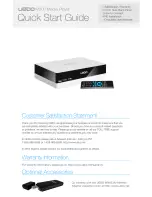
82
KAYENNE K-FRAME — Installation & Service Manual
Section 3 — Frames Installation
About Low Line (120V) Operational Considerations
If low line (120V) operation is used (mostly in North America) three char-
acteristics of the switcher should be kept in mind when provisioning AC
power for the system, which will result in the most reliable system possible:
•
Consider brown-out—Modern switching power supplies are constant
power devices and as such, unlike resistive loads, the input current
increases as the input voltage decreases.
•
Consider power supply failure—If two or three power modules are
present, they will load share. For instance, if two modules are fitted and
the total AC line current is 10 amps, each of the two line cords will draw
about 5 amps. If one supply fails, the other supply takes up the entire
load. At this point, one line cord will draw 0 amps and the other cord
will draw 10 amps.
•
Consider future options—The total AC power consumption is signifi-
cantly influenced by the number and type of hardware options
installed. This includes the number of MEs, Inputs, Outputs, and
Modular I/Os.
About High Line (208V-240V) Verses Low Line (120V) Operations
North American users usually have a choice to use low line (120 volts) or
high line (208-240 volts) as the AC source. If Lo line is used, a Standard
(13RU) K-Frame with all options installed and running at 120 volts will
draw a total of approximately 12 amps from the line cords. At 100 volts, this
increases to approximately 14 amps. This load will be evenly distributed
among the line cords. However, if one or more power supplies go offline, it
is possible for the entire 12 – 14 amps to be drawn by one line cord. For this
reason, it is recommended that each line cord be serviced by a dedicated 20
amp circuit. If this circuit is shared by other loads, consider what will
happen if the switcher line cord suddenly doubles (or triples) its current
consumption.
One 20 amp circuit is adequate to service the two or three K-Frame line
cords since the total current never exceeds 14 amps. The only disadvantage
is the reduced redundancy using one branch circuit instead of multiple cir-
cuits. In a three phase WYE distribution system, additional protection can
be achieved by using different phases for each of these circuits.
The possibility of drawing as much as 14 amps from a line cord explains the
20 amp (NEMA 5-20P) plug on the line cords supplied. The NEC in the US
specifies that the ubiquitous 15 amp outlet be de-rated to 12 amps for con-
tinuous loads. A 20 amp outlet is needed for the rare case of a 14 amp load
experienced during a fault condition.
Most of the above is not an issue if high line (240V) operation is used. Since
AC line currents are approximately half of those at low line, exceeding the
current rating of a circuit should not be a problem. In areas where there is
Summary of Contents for Grass Valley Kayenne K-Frame
Page 2: ......
Page 30: ...30 KAYENNE K FRAME Installation Service Manual Regulatory Notices ...
Page 42: ...42 KAYENNE K FRAME Installation Service Manual Section 1 Introduction ...
Page 108: ...108 KAYENNE K FRAME Installation Service Manual Section 4 System Cabling ...
Page 208: ...208 KAYENNE K FRAME Installation Service Manual Section 5 Basic Configuration ...
Page 270: ...270 KAYENNE K FRAME Installation Service Manual Maintenance ...
















































